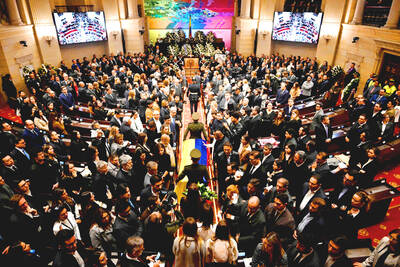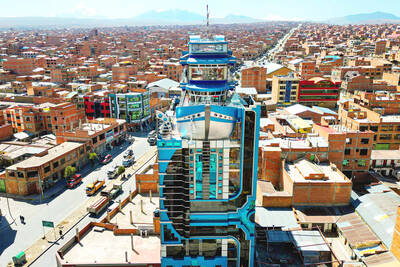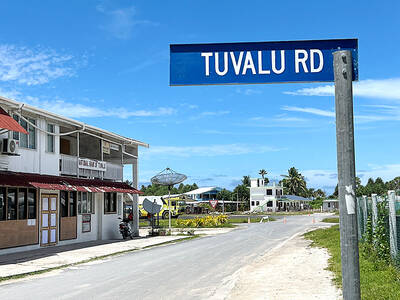The devastating earthquake that rocked Haiti in January was unleashed by a previously undetected fault line — not the well-known one initially blamed, according to an analysis of new data.
Its unclear how dangerous the new, unmapped fault might be or how it’s discovery changes the overall earthquake hazard risk for Haiti, said Eric Calais, a professor of geophysics at Purdue University in Indiana, who presented the findings this week at a scientific conference in Brazil.
The analysis shows that most, if not all, of the geologic movement that caused January’s magnitude 7.0 earthquake occurred along the newly uncovered fault, not the well-documented Enriquillo fault, he said
That suggests Haiti’s seismic zone is far more complex than scientists had anticipated, but the new fault’s profile, including the possibility that it merges with the Enriquillo fault at some depth, won’t be known until the region is intensively studied.
“If there are other faults capable of producing earthquakes besides the Enriquillo and this new one, we need to know about them. We need to go after them,” Calais said.
At the time of the quake, Haiti had no seismic stations. Researchers who flocked to the Caribbean nation have since installed about 10 stations.
Bruce Presgrave, a geophysicist with the US Geological Survey, said the discovery is the sort of revelation that often comes to light after big earthquakes, when scientists descend on quake-ravaged sites to conduct intensive research.
“It’s part of the learning process of science,” he said.
“They’re doing detailed studies of the area that aren’t possible in the hours following the quake.”
Presgrave declined to comment on the specifics of the analysis because he had not reviewed it.
Earthquakes typically occur along fault lines, areas where two sections of the Earth’s crust grind against each other. When decades or centuries of accumulated stress become too great at a fault boundary, the land gives way, causing an earthquake.
The first sign that the Enriquillo fault might not be to blame for the Haiti quake came when geologists didn’t find any surface disturbance along the east-west fault. Instead, data pointed to a new, unknown fault because an area north of the Enriquillo fault had been forced upward and to the south, Calais said.
The new findings are based on surface observations in the devastated region around Port-au-Prince, global positioning system measurements and other observations and data. Calais presented the research on Tuesday at a meeting of the American Geophysical Union in Foz do Iguacu, Brazil.
In 2008, he warned that growing stresses in southern Haiti had left the Enriquillo fault ripe for up to a magnitude 7.2 quake. He said this week that the information then wasn’t conclusive enough to say whether those stresses were building up along the Enriquillo fault or some other fault.

‘THEY KILLED HOPE’: Four presidential candidates were killed in the 1980s and 1990s, and Miguel Uribe’s mother died during a police raid to free her from Pablo Escobar Colombian presidential candidate Miguel Uribe has died two months after being shot at a campaign rally, his family said on Monday, as the attack rekindled fears of a return to the nation’s violent past. The 39-year-old conservative senator, a grandson of former Colombian president Julio Cesar Turbay (1978-1982), was shot in the head and leg on June 7 at a rally in the capital, Bogota, by a suspected 15-year-old hitman. Despite signs of progress in the past few weeks, his doctors on Saturday announced he had a new brain hemorrhage. “To break up a family is the most horrific act of violence that

HISTORIC: After the arrest of Kim Keon-hee on financial and political funding charges, the country has for the first time a former president and former first lady behind bars South Korean prosecutors yesterday raided the headquarters of the former party of jailed former South Korean president Yoon Suk-yeol to gather evidence in an election meddling case against his wife, a day after she was arrested on corruption and other charges. Former first lady Kim Keon-hee was arrested late on Tuesday on a range of charges including stock manipulation and corruption, prosecutors said. Her arrest came hours after the Seoul Central District Court reviewed prosecutors’ request for an arrest warrant against the 52-year-old. The court granted the warrant, citing the risk of tampering with evidence, after prosecutors submitted an 848-page opinion laying out

STAGNATION: Once a bastion of leftist politics, the Aymara stronghold of El Alto is showing signs of shifting right ahead of the presidential election A giant cruise ship dominates the skyline in the city of El Alto in landlocked Bolivia, a symbol of the transformation of an indigenous bastion keenly fought over in tomorrow’s presidential election. The “Titanic,” as the tallest building in the city is known, serves as the latest in a collection of uber-flamboyant neo-Andean “cholets” — a mix of chalet and “chola” or Indigenous woman — built by Bolivia’s Aymara bourgeoisie over the past two decades. Victor Choque Flores, a self-made 46-year-old businessman, forked out millions of US dollars for his “ship in a sea of bricks,” as he calls his futuristic 12-story

FORUM: The Solomon Islands’ move to bar Taiwan, the US and others from the Pacific Islands Forum has sparked criticism that Beijing’s influence was behind the decision Tuvaluan Prime Minister Feletei Teo said his country might pull out of the region’s top political meeting next month, after host nation Solomon Islands moved to block all external partners — including China, the US and Taiwan — from attending. The Pacific Islands Forum (PIF) leaders’ meeting is to be held in Honiara in September. On Thursday last week, Solomon Islands Prime Minister Jeremiah Manele told parliament that no dialogue partners would be invited to the annual gathering. Countries outside the Pacific, known as “dialogue partners,” have attended the forum since 1989, to work with Pacific leaders and contribute to discussions around